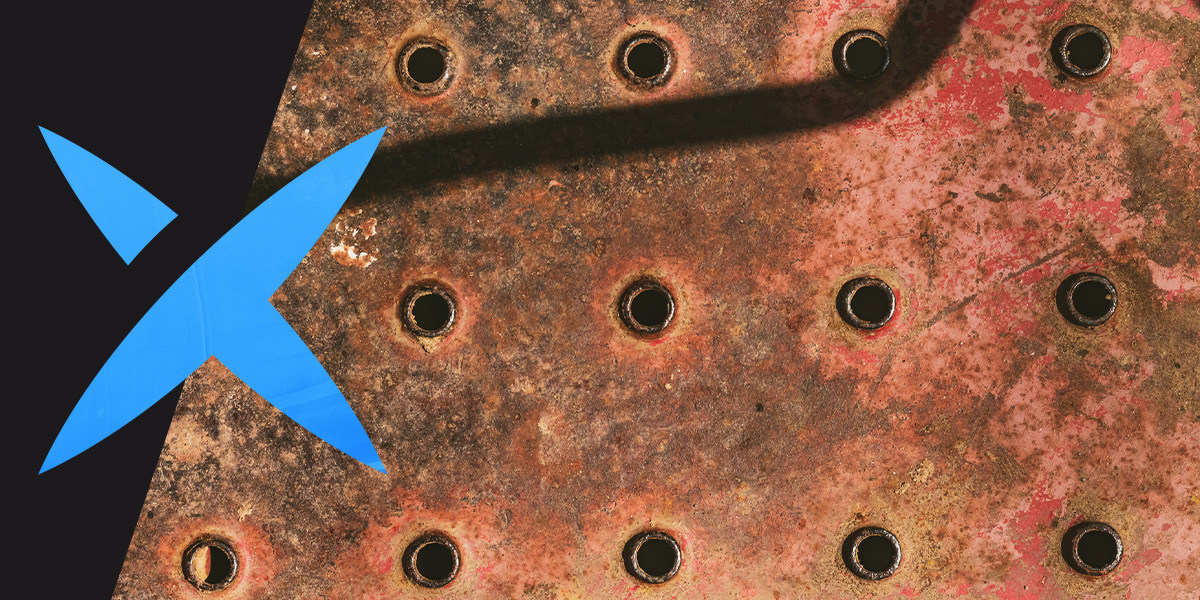
Can Sandblasting Remove Rust?
Sandblasting is a method professionals use to remove rust and corrosion from metal. To sandblast a project, you use an air compressor to send blast abrasive grains at high velocity onto your project’s surface. The rust is then broken down and removed. When considering the best approach for removing rust, it’s crucial to choose the right sandblasting media for rust removal.
Many different materials are used for sandblasting, including aluminum oxide, garnet, coal slag, copper slag, nickel slag, and crushed glass. However, some of these blast media can harm the underlying material, leaving embedded particles on the surface. Over time, this can cause rust to bloom before a primer or protective coating can be applied.
Every type of blast media has pros and cons. Ideally, you should find a blast media that works quickly, doesn’t create dangerous dust, and won’t damage the material you remove rust from. Keep reading to find out which blast media is best for your project.
What Is Rust Bloom?
When steel is left unprotected, it can quickly develop rust and begin to lose its integrity. Rust bloom, also known as “flash rust,” can form on a steel surface within hours if salts or iron residuals are present to initiate the corrosion reaction of iron and oxygen.
Like mold, rust bloom starts at the microscopic level and grows over time to cover the whole surface. If steel shows signs of rust, it should be removed before applying a primer or coating. The cleaner the metal is before coating the longer the coating system will last.
Rust bloom can increase the time, cost, and complexity of blasting and painting operations while decreasing the quality and useful life of the protective coatings. That’s why it’s so important to choose the best blasting abrasive and coat the steel before rust can bloom.
Types of Blast Abrasives for Rust Removal
Some commonly used blast abrasives include aluminum oxide, garnet, coal slag, copper slag, nickel slag, and crushed glass. Each type of blasting media for rust removal has strengths and weaknesses, and the best one to use depends on specific factors — like the material you’re blasting, how long you want the process to take, and whether you want to reuse the blast media later.
Because Aluminum Oxide tends to embed at higher blast pressures, it can be a challenge to use this abrasive for larger rust removal jobs without having a high level of embedment. To remove light to moderate rust with this aluminum oxide, it is usually best to use a 54 grit or finer grit size. Smaller grit sizes are coarser and may be better for handling thick layers of pack rust, but monitor for embedment.
While garnet can effectively remove rust, the process creates a lot of fine dust that is hazardous to breathe. Garnet also pulverizes quickly, making it difficult to reuse this media after a short number of cycles. Crushed glass is a sharper and less expensive blast media that can also be used, but the tradeoff will be in higher abrasive consumption, and it takes more time than other abrasives. Coal slag, copper slag, and nickel slag all perform similarly and are lower-cost abrasives. But they are not able to be effectively reused; they will have quite high abrasive consumption in terms of pounds per square foot, which costs the job more, and they do tend to have higher particle embedment and can even cause AIC or abrasive-induced corrosion.
Choosing the Right Sandblasting Media for Rust Removal
Ideally, you should find a blasting media for rust removal that works quickly, doesn’t create dangerous dust, and won’t damage the material you are trying to clean.
The Best Option: Superoxalloy Abrasives
Superoxalloys are a newer blast media that are made up of tempered particles. They resist breakage under high-speed mechanical impact and can be used multiple times, reducing your costs and saving the need for re-work.
These sandblasting media for rust removal can remove heavy rust at speeds from 30% to 80% faster than other abrasives, and they can do it in one step. Additionally, superoxalloy abrasives are safer than the alternatives — they are biosoluble, and carry an IARC monograph from the World Health Organization, making them among the most safety tested products on the market.
In a comparison trial run by 10X Engineered Materials, metal sheets were cleaned with garnet, copper slag and a superoxalloy abrasive. After 24 hours, rust bloom was visible on the sheets cleaned by both the slag and garnet. After 48 hours, rust bloom was much worse on both sheets. However, the metal where superoxalloy abrasive was used showed no visible rust even after 48 hours — except an area near the garnet-treated metal, where the rust had spread.
Another test with this product had a ship hull cleaned to an SSPC-SP6 finish and then left uncoated in a humid area for three weeks — the hull remained clean and ready to coat. Superoxalloys are the best choice for most projects because of their high effectiveness and few downsides.
Choose 10X Engineered Materials Superoxalloy Blast Abrasives
10X Engineered Materials has developed three effective lines of superoxalloy blast abrasives, EpiX, DynamiX, and KinetiX. These abrasives will not only get rid of rust, but also leave a clean substrate, virtually free of embedded particles that may result in rust bloom.
To find out more about this product, contact 10X Engineered Materials at 260-253-2278 or fill out our online form. You can find our products through most blast abrasive suppliers, or order our EpiX line directly from our website. We can’t wait to hear how our product benefits your next project!
